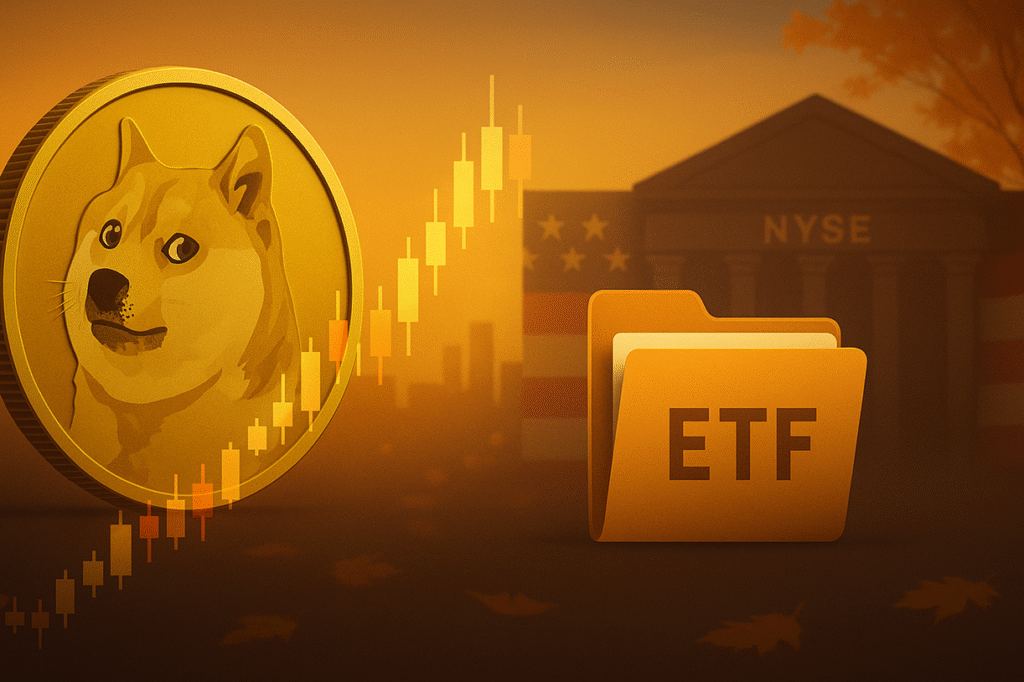In the ever-evolving world of digital assets, the introduction of new financial products can offer significant opportunities for investors looking to diversify their portfolios. One such development is the impending potential launch of the first US spot Dogecoin ETF, a move that could have far-reaching implications for the cryptocurrency market. This guide delves into the mechanics behind this development, the strategies employed by asset management companies, and the regulatory landscape shaping these moves, providing a comprehensive look at the future of cryptocurrency investments.
The Countdown to the First US Spot Dogecoin ETF
Understanding Section 8(a) of the Securities Act
The pathway to launching a spot Dogecoin ETF in the United States has been set in motion by Bitwise Asset Management’s strategic utilization of Section 8(a) of the Securities Act. This section allows a registration statement to automatically become effective after 20 days unless the Securities and Exchange Commission (SEC) intervenes. By removing the typical “delaying amendment” language from its S-1 registration, Bitwise has positioned itself to potentially introduce its spot Dogecoin ETF by November 26, barring any SEC interventions.
The Regulatory Framework
Recent shifts in the SEC’s approach to digital-asset ETFs have paved the way for faster approval processes. The adoption of generic listing standards in September has greatly streamlined the pathway for these financial products on major exchanges. This regulatory evolution has seen the previous case-by-case approach give way to a more expedited process, encouraging issuers to leverage Section 8(a) more effectively. This trend was particularly evident during October’s government shutdown when several non-BTC/ETH crypto ETFs launched successfully by forgoing the delaying amendments.
Recent Precedents and Implications
October proved to be a pivotal month in the cryptocurrency ETF landscape. For instance, the launch of Bitwise’s Solana Staking ETF on the NYSE gave investors direct SOL exposure, showcasing the utility and demand for such products. Concurrently, Canary Capital’s listing of a spot Hedera product on Nasdaq demonstrated the viability of smaller-cap networks entering the ETF space. These launches exemplified how strategic use of Section 8(a) enables issuers to navigate regulatory frameworks efficiently, achieving market entry without the need for bespoke approval orders.
Market Impact and Future Prospects
The anticipated launch of a spot Dogecoin ETF represents a significant milestone in the integration of cryptocurrencies into mainstream financial markets. Should the ETF become effective, it could enhance market liquidity, increase investor access, and further legitimize Dogecoin as a viable asset. However, this development hinges on the SEC’s stance and any potential interventions that could alter the timeline.
Expert Insights and Analysis
The strategic maneuver by Bitwise has not gone unnoticed, capturing the attention of industry analysts like Bloomberg’s Eric Balchunas. His observations underscore the importance of understanding regulatory nuances and the strategic timing involved in navigating the ETF approval process. As the deadline approaches, investors and market participants keenly await developments, which hinge on both regulatory decisions and broader market conditions.
FAQs
Is the launch of a spot Dogecoin ETF a certainty?
While Bitwise Asset Management has set the stage for a potential launch, the actualization of a spot Dogecoin ETF depends on the SEC’s response within the stipulated 20-day period. The absence of a stop order will allow the ETF to go live, providing a new avenue for Dogecoin investments in the U.S.
How could a Dogecoin ETF impact the market?
A Dogecoin ETF could enhance liquidity and exposure for both institutional and retail investors. It would further validate Dogecoin as a legitimate investment vehicle, potentially attracting more interest in the cryptocurrency market.
What are the key factors for an ETF’s success?
The success of an ETF largely depends on market demand, regulatory compliance, liquidity, and the issuer’s ability to manage and market the fund effectively. Additionally, the underlying asset’s market performance plays a crucial role in determining investor interest.
As the countdown continues, stakeholders remain vigilant, recognizing the broader implications such financial instruments hold for the future of cryptocurrency markets and investor strategies.

